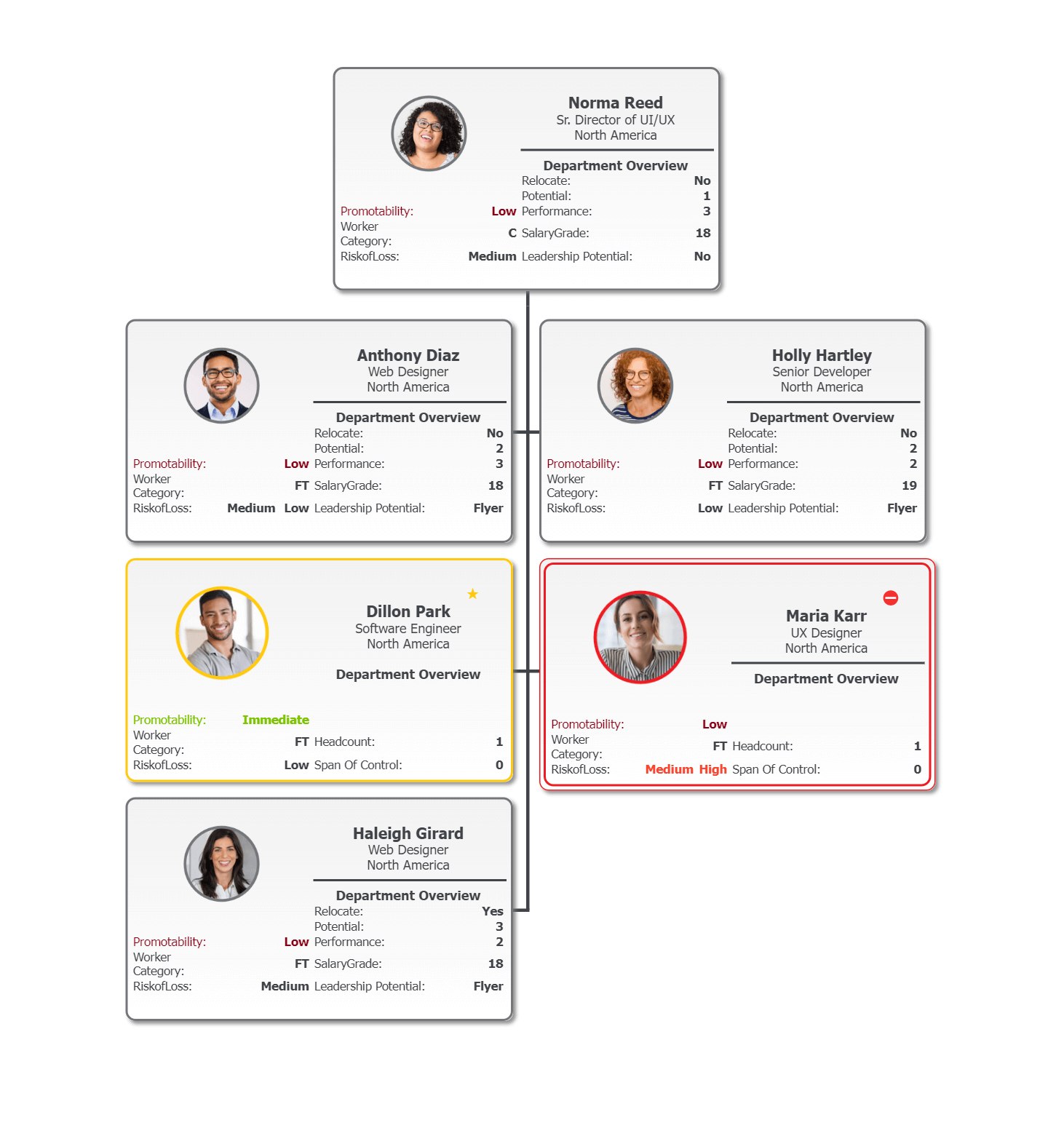March 13, 2019
6:30 AM
By OrgChart Team
An organization’s structure forms the backbone of its functionality and efficiency, especially in the context of medium to large-sized corporations. Structure dictates the relationship of roles in an organization, and therefore, how people function. The implication is profound — a company’s structure that’s not up-to-date can lead to ambiguity, confusion, and a lack of accountability.
Consequently, whether an organization is going through mandated changes, such as a merger or workforce reduction, or simply reevaluating its structure, organizational charts (or “org charts”) can provide invaluable insights.
In the ever-evolving economic landscape, employees’ expectations of their compensation packages have escalated. Top talent is a flight risk if they perceive their compensation as inadequate. Org charts can effectively assist HR professionals and managers in analyzing individual and group metrics related to salary. This helps devise an equitable compensation plan that retains talent and attracts it.

By utilizing org charts, management can answer critical questions like, “Are we paying a group of employees in Location A more than their counterparts in Location B with similar skill sets?” This kind of analysis enables a holistic comparison of groups with similar skill sets, and their salaries can be averaged and juxtaposed with industry standards. A well-planned and fair salary structure, guided by data from org charts, can significantly boost job satisfaction across the organization.
One key element that adds to an organization’s strength is the breadth and depth of its employees’ experiences. Progressive companies often move employees across job functions to enrich their work backgrounds and increase their skill diversity. According to the Society for Human Resource Management, job mobility and the opportunity to utilize one’s skills contribute to job satisfaction.
Org charts can facilitate the identification of employees ready for a role change. These charts visually represent important metrics like work experience and tenure, assisting HR professionals in making informed decisions about internal mobility and promotions.
Proactive and strategic HR management involves preparing for the future. This includes planning for inevitable transitions when key personnel leave due to retirement, transfer, or resignation. Succession planning is a strategic move to identify and prepare potential successors to step into vital roles seamlessly.
Org charts can help visualize employees’ skill and performance metrics across the organization. This graphical representation aids HR professionals in identifying potential successors or pinpointing departments where management potential needs further development.

Transform how you manage your organization with OrgChart, the definitive tool for today’s forward-thinking HR professionals. Unlock the power of transparent, data-driven decision-making with these six core benefits:
With OrgChart, you’ll make better-informed, more strategic decisions that align with your organization’s objectives. Explore what OrgChart can do for you — request a quote today!